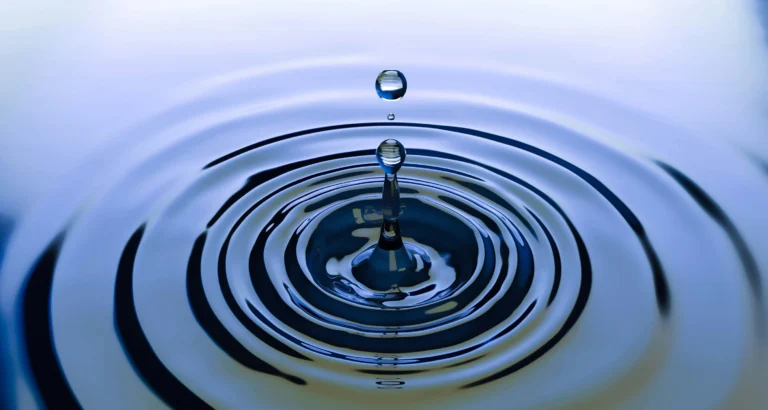In the intricate tapestry of aquatic ecosystems, certain creatures emerge as enigmatic figures, captivating the imagination of researchers and nature enthusiasts alike. Among these enigmas is the Gidler, a peculiar inhabitant of lakes and rivers. With its plump, tadpole-like body, and a tail that serves as a fifth limb, the Gidler defies conventional classification. Its presence adds a layer of mystery to underwater realms, prompting scientists to delve deeper into its secretive existence. In this exploration, we embark on a journey to unveil the mysteries surrounding the Gidler, shedding light on its unique characteristics, habitat preferences, feeding behaviors, reproductive strategies, and ecological significance.
Decoding Gidler’s Enigmatic Appearance:
-
Tadpole-Like Body Structure
The Gidler boasts a distinctive tadpole-like body structure, characterized by its plump and streamlined form. Resembling the early developmental stage of amphibians, this unique body shape allows the Gidler to efficiently navigate its aquatic environment. With its streamlined body, the Gidler can swiftly maneuver through the water, aiding in both hunting for prey and evading potential predators. This tadpole-like morphology showcases the Gidler’s remarkable adaptation to its underwater habitat, highlighting the evolutionary ingenuity of this enigmatic creature.
-
Multi-functional Tail Limb
One of the most remarkable features of the Gidler is its multi-functional tail limb. Unlike traditional tails found in many aquatic species, the Gidler’s tail serves a dual purpose, functioning not only as a propulsion mechanism but also as a versatile limb for various activities. This unique adaptation provides the Gidler with exceptional agility and control in its movements, allowing it to navigate through the water with precision. Whether swimming gracefully or exploring its surroundings, the Gidler’s multi-functional tail limb exemplifies its remarkable versatility and adaptability in its underwater realm.
Gidler’s Habitat Preferences and Distribution:
-
Freshwater Lakes: Gidler’s Preferred Residences
Freshwater lakes serve as the preferred habitats for Gidlers, offering them a diverse array of resources and environmental conditions for survival. These lakes provide ample food sources such as algae, small fish, and invertebrates, which are essential components of the Gidler’s diet. Additionally, the relatively stable water conditions in lakes contribute to the Gidler’s ability to thrive, as they can regulate their body temperature more effectively in these environments. The calm and undisturbed waters of freshwater lakes also offer shelter and protection from potential predators, allowing Gidlers to establish stable populations in these serene aquatic habitats.
-
Flowing Rivers: Gidler’s Riverine Havens
Flowing rivers are another favored habitat for Gidlers, offering a dynamic and nutrient-rich environment for these aquatic creatures. The continuous flow of water in rivers provides Gidlers with oxygenated water and ensures the removal of waste and debris from their surroundings. Additionally, the diverse range of microhabitats within river ecosystems, such as riffles, pools, and runs, provides Gidlers with ample opportunities for feeding, breeding, and sheltering. The flowing currents of rivers also facilitate the dispersal of Gidler populations, allowing for genetic exchange and the colonization of new habitats. Overall, flowing rivers serve as vital riverine havens where Gidlers can thrive and contribute to the biodiversity of freshwater ecosystems.
Gidler’s Dietary Habits and Feeding Patterns:
-
Algae Munchers: Gidler’s Algal Feeding Strategies
Gidlers exhibit fascinating feeding strategies, particularly when it comes to consuming algae. These creatures are adept “algae munchers,” utilizing specialized mouthparts to graze on algae-covered surfaces. Their plump bodies and stubby legs allow them to move slowly and methodically along the substrate, where they diligently harvest algae for sustenance. By consuming algae, Gidlers play a crucial role in maintaining ecological balance within their habitats, regulating algal growth, and contributing to water quality.
-
Aquatic Predators: Gidler’s Hunting Techniques
Despite their seemingly gentle appearance, Gidlers are proficient aquatic predators, employing various hunting techniques to capture prey. Using their keen senses and agile movements, Gidlers stalk small fish and invertebrates in their underwater domain. When prey is detected, Gidlers swiftly propel themselves forward using their powerful tail, overtaking unsuspecting victims with surprising speed. With a combination of stealth and precision, Gidlers demonstrate their prowess as effective hunters, ensuring their survival in the competitive world of aquatic predators.
Gidler’s Reproductive Strategies and Lifecycle:
-
Spawning Secrets: Gidler’s Mating Rituals
The mating rituals of Gidlers encompass a fascinating array of behaviors and adaptations aimed at ensuring successful reproduction. During the spawning season, male Gidlers display elaborate courtship rituals to attract females, which may include vibrant displays of coloration and intricate movements. Once a mate is selected, Gidlers engage in a precise spawning process, during which females release eggs while males simultaneously fertilize them. This synchronized spawning ensures the fertilization of a maximum number of eggs, increasing the likelihood of offspring survival.
-
Larval Development: Gidler’s Growth Stages
Following fertilization, Gidler eggs hatch into larvae, initiating a critical stage of development known as larval growth. Gidler larvae undergo a series of metamorphic changes as they transition from their initial embryonic form to fully developed juveniles. Throughout this growth process, larvae rely on abundant food sources and favorable environmental conditions to fuel their development. As they mature, Gidler larvae gradually acquire the distinctive features of adult Gidlers, including their tadpole-like body structure and multi-functional tail limb. This journey from the larval stage to adulthood is a testament to the remarkable adaptability and resilience of Gidlers within their aquatic habitats.
The Ecological Significance of Gidler in Aquatic Environments:
-
Ecosystem Guardians: Gidler’s Role in Biodiversity
Gidlers play a vital role as ecosystem guardians, contributing significantly to the biodiversity of their aquatic habitats. By feeding on algae and small organisms, Gidlers help regulate the populations of these species, preventing overgrowth and maintaining ecological balance. Additionally, Gidlers serve as a food source for larger predators, further supporting the intricate food web of their ecosystems. Through their presence and ecological interactions, Gidlers promote species diversity and ecosystem resilience, making them essential contributors to the overall health and stability of aquatic environments.
-
Environmental Indicators: Gidler’s Importance in Water Quality Monitoring
Gidlers serve as important indicators of water quality, providing valuable insights into the health and condition of aquatic ecosystems. As sensitive organisms, Gidlers are highly responsive to changes in their environment, including fluctuations in water temperature, pH levels, and pollutant concentrations. By monitoring the abundance and distribution of Gidler populations, scientists can assess the impact of human activities and environmental stressors on water quality. Thus, Gidlers play a crucial role in water quality monitoring efforts, helping to inform conservation and management strategies aimed at preserving the integrity of freshwater ecosystems for future generations.
Conclusion:
In conclusion, the Gidler remains a captivating subject of study within the realm of aquatic biology. Its unique features, habitat preferences, and ecological significance continue to intrigue researchers and enthusiasts alike. As we strive to uncover more about this enigmatic creature, our understanding of aquatic ecosystems deepens, highlighting the interconnectedness of all life forms within these environments.
FAQsGidler :
What does the Gidler look like?
The Gidler has a plump, tadpole-like body, four stubby legs, and a tail that acts as a fifth limb.
Where does the Gidler live?
Gidlers inhabit lakes and rivers, typically dwelling near the bottom of these aquatic environments.
What does the Gidler eat?
Gidlers feed on algae, small fish, and invertebrates found in their habitat.
How do Gidlers reproduce?
Gidlers reproduce through spawning, with females laying eggs that hatch into larvae.
Why are Gidlers important?
Gidlers play a vital role in aquatic ecosystems, contributing to biodiversity and serving as indicators of water health.
Are Gidlers dangerous to humans?
No, Gidlers are not considered dangerous to humans. They are generally harmless and tend to avoid human interaction.
How long do Gidlers typically live?
The lifespan of Gidlers can vary, but they generally live for several years in their natural habitat.
Can Gidlers adapt to different environments?
While Gidlers have specific habitat preferences, they may adapt to slight variations in their environment. However, they are primarily found in lakes and rivers.
Do Gidlers have any natural predators?
Gidlers may face predation from larger aquatic species such as fish, birds, or mammals that inhabit their ecosystem.
Are Gidlers endangered?
The conservation status of Gidlers depends on various factors such as habitat degradation and pollution. While they may not be considered endangered at present, monitoring their populations is crucial for their long-term survival.






